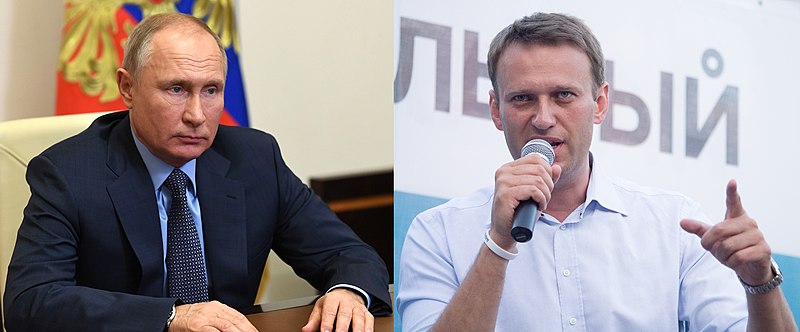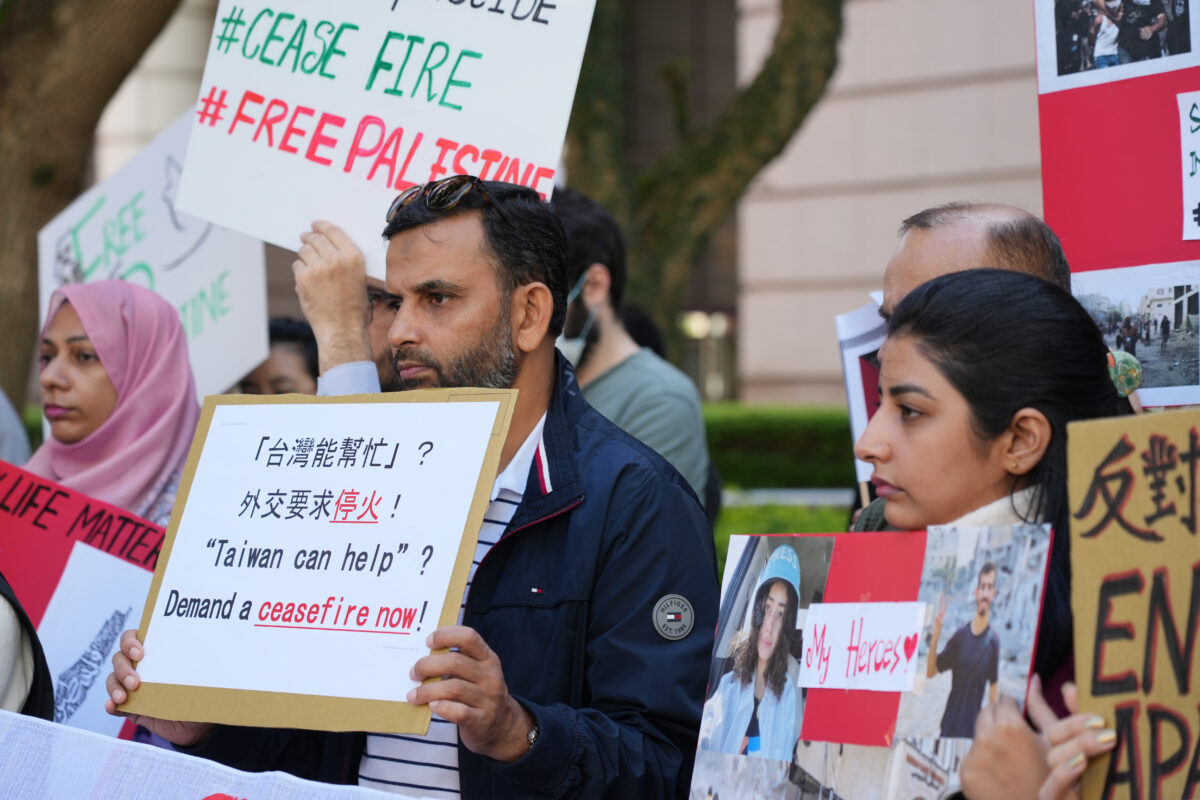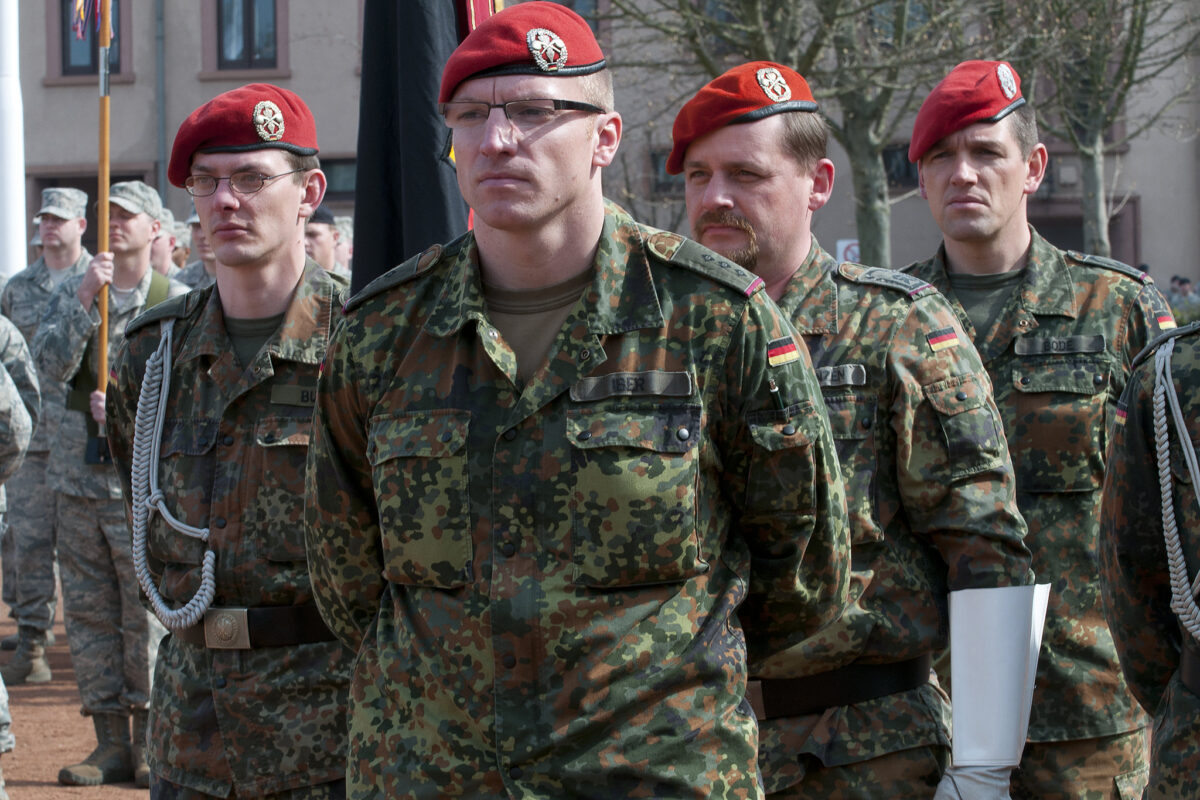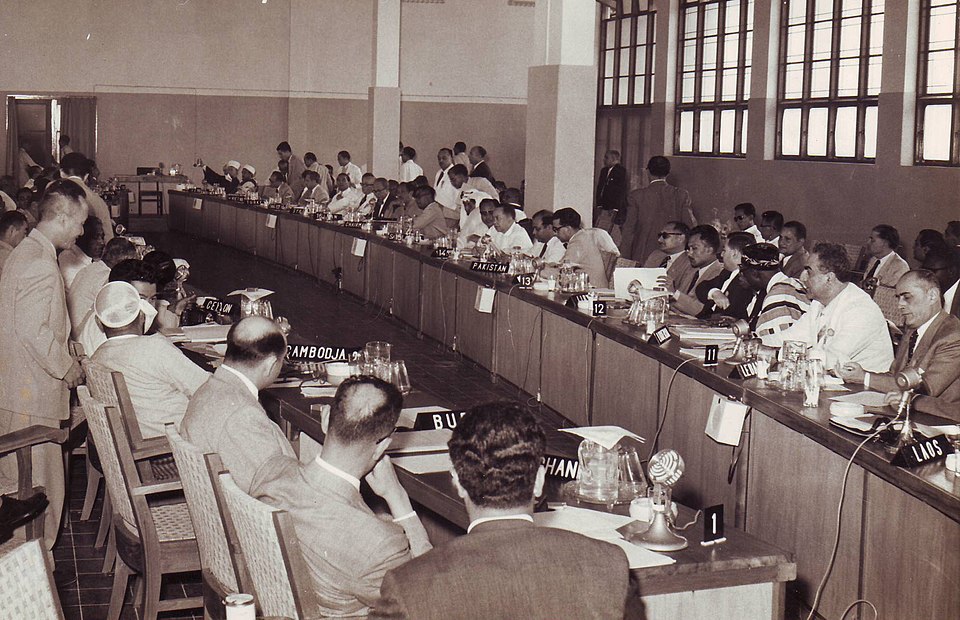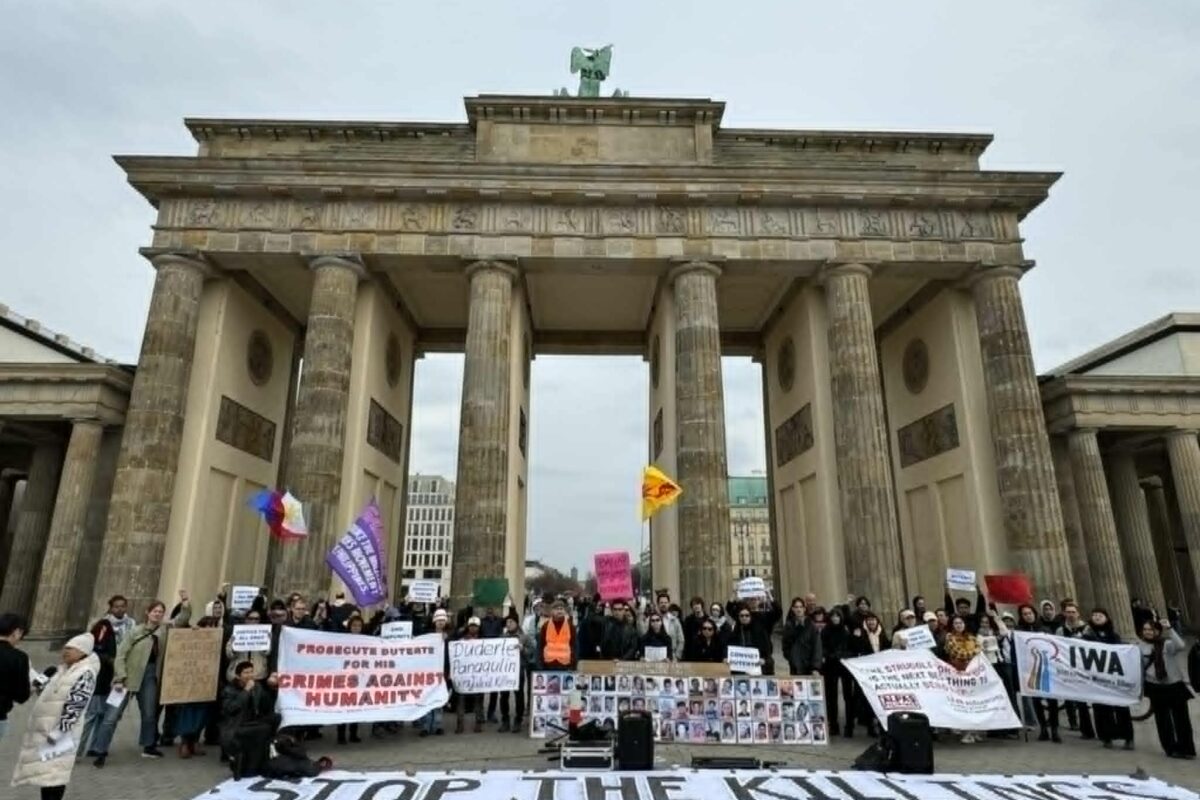Introduction
Who does Alexei Navalny represent? Certainly, he has admirable courage and is determined to challenge the oligarchy of Vladimir Putin. A clear view of his links to Western capitalism, however, shows that he is no hero of the working classes of Russia. In reality, the current battle pits the Putin class of ‘Siloviki’ (the so-called ‘strong-men’) oligarchs against Navalny, who is a flag bearer of Western capitalism. Sad to say, there are no simple heroes here. Despite this, Navalny has roused a large portion of people to see through Putinism, and that movement should be supported by socialists. To understand the current events, we must review how we got here.
The creation of a Russian oligarchy from the corpses of Soviet socialist enterprises
Ever since the 1917 Bolshevik socialist revolution in Russia, those wanting a capitalist ‘reform’ repeatedly tried to turn the clock back. The adoption of a market economy within the USSR was first espoused by Nikolay Akekaeyevich Voznesenskyin 1947 in a book that anticipated the ‘reforms’ of Nikita Khrushchev:
“His (Voznesensky’s — Ed.) economic theories . . . anticipated by a decade the actual changes in the structure of the Soviet economy that were introduced during 1957-60”. [1]
The changes that Vosnosensky called for took place under the new leadership of the state formed by Khrushchev. It did away with any semblance of a planned economy:
“From 1955.. revisionist economists like Evsei Liberman were writing in Soviet economic journals of the ‘necessity’ of freeing the economy from ‘excessive’ centralised direction and giving greater freedom to the directors of enterprises to decide what and how much the enterprises in their charge should produce:
“These shortcomings in economic management should be eliminated . . . by developing the economic initiative and independence of enterprises”. [2]
The purpose was to institute a new regulator of production – profit:
“Production will be subordinated to changes in profits”. [3]
Yet if under Khrushchev, the profit motive was resurrected in the former USSR, it still took time to undermine people’s support of the Soviet state. The final dismantling of the former socialist state occurred under President Gorbachev. Gorbachev oversaw the ongoing steady erosion of central controls and allowed state-owned enterprises to regulate themselves. Following these changes, living conditions deteriorated for the people. Still, Boris Yeltsin and others leaders wanted faster changes to an unmitigated open capitalism. Gorbachev was elbowed aside, and resigned as Soviet President saying “My life’s work has been accomplished’. [4]
As Roy Medvedev says:
“The new rulers of the Russian federation introduced a political program that mounted to a ‘revolution from above’, whose aim was to transform the so-called socialist system of former Soviet Russia into a liberal capitalist system. President Boris Yeltsin … carried out extensive measures to eliminate state owned industry and privatize the entire economic infrastructure” [5]
Yeltsin, behind Gorbachev’s back, had already engineered the formal liquidation of the USSR into the so-called new ‘Commonwealth of Independent States’, which he signed into effect in the Belavezha Accord of 1991. Now the final bars to a profit making society were removed as Boris Yeltsin ushered in key changes.
As the ‘Independent’ reported in 1982:
“The removal of price control and subsidies decreed by the Russian President, Boris Yeltsin, is intended to accelerate the transition to a market economy. . . .The price reform abolishes all state controls on many consumer goods and services. . . . Millions of Russians will be condemned to unknown poverty overnight There is little hope that catastrophe can be avoided “. [6]
Together with his Prime Minister Yegor Gaidar, Yeltsin sold off the state. All citizens were to receive an anonymous voucher for “an equal share” of the country’s industrial enterprises. This was supposed to total ten thousand roubles – said the new President. [7] but under a rapid inflation that set in, that value fell dramatically. In any case people were not being paid. These vouchers ended up being sold for survival. As the mayor of Moscow Yuri Luzhkov put it:
“Privatisation was like a drunkard in the street selling his belongings for a pittance”.
In swooped those with even a little cash and bought up the vouchers to possess the former enterprises. Yeltsin and Gaidar were guided by an influx of USA and Western ‘economists’ such as Jeffrey Sachs. [8] This is how the oligarchy in Russia was created. It was to be exemplified by the oil and gas magnate Mikhail Khodorkovsky (1963-) whose power was to be broken by Putin.
2. Where was Putin in all this?
Vladimir Putin (1952-) was the Chief of the KGB in Dresden during the late days of the GDR. It is likely that in the GDR’s final days Putin was involved in moving cash stores of the Stasi into the West. [9] Nevertheless, after the GDR’s collapse, Putin returned to Russia, supposedly resigning from the KGB in 1991. He emerged as a politician in St Petersburg in 1994. In 1997 he was appointed by President Yeltsin as deputy chief of the presidential staff. By 1998 he had become Director of the Federal Security Service (FSB), the successor to the KGB. By 1999 he was appointed as acting Prime Minister by President Yeltsin, whose resignation led to Putin becoming Acting President. There should be no illusions that Putin had any sympathy for socialism or communism. He said in an interview:
“the Bolsheviks “destroyed what glues, molds the people of civilized countries – market relationships. They destroyed the market, emerging capitalism. The only thing that they did to keep the country together within common borders – was a barb wire.” [10]
The main theme to grasp is that two factions of the Russian ruling class emerged clearly at this time. By this time the disintegration of the Russian state economy and industry was apparent. A rising mood of the people against the ‘Oligarchs’ was also being felt. By now the apparent opening of the Russian state to Western capital was obvious.
The first capitalist grouping was manifestly aligned with Western capitalism. Its’ clearest representative was the multi-billionaire Mikhail Khodorkovsky, who had formed the Yukos oil giant. He had fervently bought up state issued vouchers and used them to buy major components of the oil and petrochemical industry at fire sale prices. The gas industry was not broken up into small pieces, but was kept intact, becoming the privately owned Gazprom. That formed the economic nidus of the second and opposing faction of capitalists, a Russian national capitalist class. This was first headed up by Viktor Chernomyrdin, and then later by Putin himself. This group swept up smaller residues of the oil industry into firms smaller than Yukos, but still sizeable – such as Rosneftgaz which produced more than 60% of the crude oil output. [11]
3. Various phases of the Battle between Russian national capitalists (Putin-ites) and the pro-Western representatives (Khodorkovsky and Navalny)
Putin rapidly surrounded himself with the so-called Siloviki (‘strong men’ or so-called KGB Inc.) led by Igor Sechin. These men had no interest in selling Russia to the West, instead wanting to keep Russian capital, to be used for dubious purposes, for example helping Bassar al-Assad of Syria. As Putin’s former chief economics advisor Andrei Illarionov put it:
“Their ideology is the so-called ‘nash-ism‘ [ours-ism].. For ‘us’ common laws are not applicable. Another element of their corporativist state and nash-ism is the widespread use of force and violence in various forms towards opponents and ‘the others’.” [12]
The first target they went after was the section of the oligarchs who were the entry point for foreign capitalists into the Russian economy. This especially applied to Khodorkovsky, who had been lauded by ‘Business Week’. Khodorkovsky had appointed prominent Westerners to the board of Yukos including Henry Kissinger and David Owen, and was paying dividends to non-Russians. Khodorkovsky openly flaunted his course:
“We now have a lot of American shareholders in Yukos. In Russia we are a sort of poster-child company, a symbol of where the Russian economy and business culture is headed.”
Khodorkovsky looked unstoppable. Yukos Oil was on the point of an 50-50 partnership with ExxonMobil in 2003. Of additional irritation to Putin, Khodorkovsky had also started a movement in social life as well, which was called ‘Open Russia Foundation’ in 2001, modelled on George Soros’ ‘Open Society’.Putin abruptly broke Yukos by first imprisoning the executives including Khodorkovsky and seizing corporate assets. While pretending to be ‘anti-oligarchy,’ Putin enriched and formed his own clique. While Khodorkovsky was released into exile after 10 years, the faction that he represented had suffered a major setback.
Does all this remind one of Alexei Anatolievich Navalny (1976-)? Perhaps it should. For Navalny is the second wave of Western capitalists’ attempted break into Russia. Of Navalny, Khodorkovsky is on record as saying “We are allies“. [13]
Navalny started his career as a lawyer before studying finance in Moscow and Yale. Rapidly becoming an oppositionist, Navalny regularly organises demonstrations against corruption and Putin. Now according to Wikipedia he has ‘more than six million Youtube subscribers and more than two million Twitter followers.’ In 2000 he joined the Russian United Democratic Party Yabloko. Again, just like his predecessor he formed a social movement, but this time with perhaps more of a directly political edge – ‘The People” Movement’, and also the ‘Movement Against Illegal Immigration‘ (MAII) and Great Russia, to form a new coalition, the Russian National Movement. In 2012, Navalny attempted to form a new party, ‘The People’s Alliance’. He has stood for elections several times under severely hampered circumstances and has widely published about Putin’s corruption
“In a June survey by the Levada Center, a non-governmental research organization, he was named the most inspiring public person in Russia other than Putin.”[14]
All his above activity faced legal obstructions from the Putin state. But in addition there was physical intimidation and harassment. This escalated to the heights of an assault on his eye in 2017; and then with the almost-successful chemical poisoning with Novichuk last year. Two factors prevented Navalny’s death: the pilot of the plane unexpectedly made an emergency landing, which allowed doctors at the Russian hospital to administer an unexpected antidote (atropine). The subsequent removal to Berlin where the diagnosis was confirmed would not otherwise have been possible.
Putin’s administration has a sizeable track record of using such means to dispose of its enemies, beginning with the 2006 Alexander Litvinenko murder. We will not detail these here. Naturally, just as the Skripal poisoning was disputed, so too has the Navalny poisoning. Pro-Putinites insist that both poisonings were ‘false flags’. One account even purports that Navlany self-adminstered the poison. I will not dignify these reports by citing them, they are easy enough to find on google. The spin these acolytes of Putin will take now that a major movement is on the move in Russia, against Putin, can be imagined.
Where the current situation will lead
Navlany flew back to Russia in January 2021. He fully understood that he would be arrested on a number of somewhat spurious charges. He had in the meantime exposed the secret service attempts to poison him with a taped ‘sting’ telephone call to one of the FSB operatives while posing as an operative. He had also openly goaded Putin. In these very public statements, and in his courting of arrest – Navalny has behaved just like Khodorkovsky did in his day.
On January 17 2021 Navalny was arrested. However, in sharp contrast to previous arrests of anti-Putin agitators, there was now a reservoir of heightened, near-organised discontent in the Russian people. Moreover, social media enabled wide-spread demonstrations. He had amplified the publicity by releasing a documentary on Putin’s palace-hideway near the Black Sea. It appears to have cost over 100 billion rubles ($1.35 billion) to build. The video received over 100 million views of which more than 70% were from inside Russia, according to Navlany’s allies. [15]
Thousands of demonstrators showed solid resistance to police and military forces, gathering in 100 cites across Russia. As the New York Times commented:
“In all, more than 3,000 people were arrested on Saturday amid one of the most striking displays of discontent that Mr. Putin has faced in 21 years in power.” [16]
Critical was a satirical takedown of Putin:
“For Princeton professor Ekaterina Pravilova, a specialist in tsarist-era law, economy, and governance, the video’s greatest achievement was the “desacralization of power.” By using humor and irony to ridicule Putin’s venality and bad taste, Navalny turned a formerly revered leader into a punch line. Revelations that the palace contained something called an aqua-disco and that its bathrooms were fitted with €700 toilet brushes birthed instant memes. For the Kremlin, the sight of toilet brush–wielding protesters chanting “Aqua-disco!” at police… is no laughing matter: “When power loses the aura of sainthood, the legitimacy of a monarch crumbles,” said Pravilova.” [17]
This ability to capture the mood of cynicism about the Putinite system, and turn it into potentially viable social movements is critical. It differs from either the previous oligarch attempts, or the old revisionist Brezhnevite, tankie discredited movements. The major force in the latter is the Communist Party of the Russian Federation (KPRF). Navalny made overtures to these left forces, through a movement he called ‘Smart Vote’.
‘Smart Vote’ is a clever platform to unite people in voting against candidates of ‘United Russia’ (Putin’s vehicle – the largest party holding 75% of the 450 seats in the Duma). It overcame the Putin strategy of denying any standing right for independents at elections, by simply finding alternative electable candidates to unite around. It helped elect some independent candidates to power including high profile United Russian players. Navalny has been able to light up many movements:
“The blossoming of organizations like OVD Info and Apologia Protesta suggests a significant revitalization of civil society. In the same way, Navalny’s concept of Smart Voting, where citizens vote strategically for the single strongest non–United Russia candidate in each district, has empowered a cohort of young people to enter politics without pledging fealty to Moscow.”
Increasingly, people are seeing through the calm, apparently bland exterior of Putin to his corrupt core. The June 2020 referendum to enable Putin to stay in power until he is 84 years old was widely seen as a compound of fraud and coercion. [18]
But it should not be concluded that Navalny is a saint nor a confirmed savior. He is clearly no socialist and has no economic plan for the dire state of people’s lives. And even leaving aside capitalism, he upholds major reactionary ideologies. For example he has clearly demonstrated himself to be a Russian racist and chauvinist who despises the other nationalities in the Russian federation. He clearly wishes to enable Western capital entry into Russia to dominate the economy.
Conclusion
Russia is a capitalist dictatorship, dominated by the clique of oligarchs who surround Putin. Under Putin’s rule, a rule by personal decree, where stooges control all arms of the state including the judiciary, democracy has been stifled. While Navalny is offensively anti-immigrant, anti-Chechen, and is supported by Western capitalism, he has undoubtedly been a major part of a wide grass-roots democratic movement. Critical support for his ‘Smart Voting’ movement as a first step to rebuilding a socialist movement is the only way forward for progressives inside Russia.
Footnotes
1 Bruce J. McFarlane: ‘The Soviet Rehabilitation of N. A. Voznesensy –Economist and Planner’, in: ‘Australian Outlook’, Volume 18, No. 2 (August 1964); p. 151; cited by Bland; and W. B. Bland, ‘The Restoration Of Capitalism In The Soviet Union’; Wembley UK, 1980; at: http://www.oneparty.co.uk/html/book/ussrindex.html; and http://www.oneparty.co.uk/html/book/ussrleningrad.html
2 W.B.Bland for the Communist League (UK); Compass No.92. November 1991 “An open letter to the “New Communist Party”; citing E. G. Liberman: ‘Cost Accounting and Material Encouragement of Industrial Personnel’, in: ‘Voprosy Ekonomiki’, No. 6, 1955.
3 G. Kosiachenko: ‘Important Conditions for the Improvement of Planning’, in: ‘Voprosy Ekonomiki’, No. 11, 1962; In Bland Ibid.
4 Cited in ‘Times’, (London); 9 December 1991; p. 1
5 Roy Medvedev, “Post-Soviet Russia. A Journey through the Yeltsin era”; New York; 2000; p.4
6 ‘Independent’, 2 January 1992; p. 1; 8
7 Medvedev Ibid p. 89; 90;
8 Catherine Belton, ‘Putin’s People’; New York; 2020; p.76
9 Belton Ibid p. 33-34
10 Gordon M. Hahn, Report: Towards a Political Biography of Vladimir Putin: From Commissar to Accidental Revolutionary From Above,1975-2003: Russian & Eurasian Politics; November 12, 2020
11 Marshall I Goldman, ‘Putin Power and the New Russia”; Oxford 2008; p.62
12 Martin Sixsmith, “Putin’s Oil. The Yukos Affair and the Struggle for Russia”; London 2010; p.55; 49; 77
13 Interview with ‘Voice of America’
14 Jake Rudnitsky,’Putin, Poison and the Importance of Alexey Navalny’; January 15, 2021; Bloomberg
15 Ivan Nechepurenko, ‘Russian Court Orders Aleksei Navalny Kept in Jail‘, January 28, 2021, New York Times.
16 Anton Troianovski, ‘Navalny Allies and Offices Targeted in Raids as Kremlin Turns Up Pressure’; New York Times; Jan. 27, 2021
17 Vadim Nikitin Alexei Navalny Grows More Powerful Every Time Putin Talks About Him’; January 28, 2021; The Nation’; Washington DC
18 Vadim Nikitin, As Alexei Navalny’s Life Hangs In The Balance, So Does The Fate Of The Russian Opposition’; September 2, 2020; The Nation’; Washington DC.
